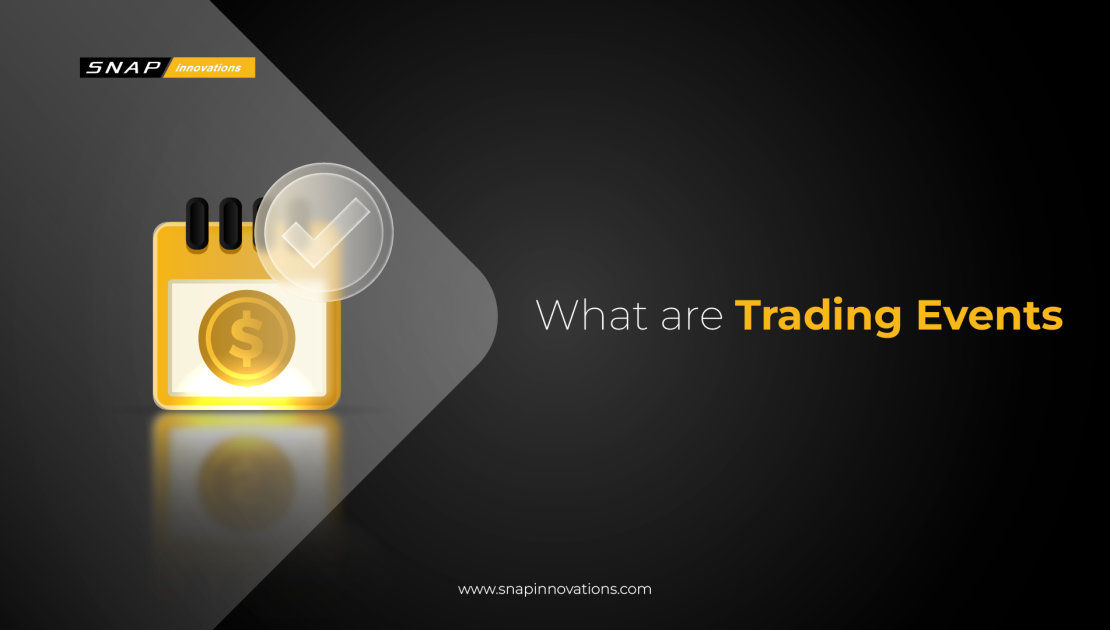In the ever-evolving and dynamic world of finance, trading events stand as pivotal moments that can shape the trajectory of markets, influence investment strategies, and redefine the economic landscape. These events, encompassing a wide range of activities from earnings announcements to geopolitical shifts, hold the power to sway market sentiment and create ripples across global economies. Understanding trading events is not just about knowing what they are, but also about grasping their impact on the complex fabric of financial markets.
As we delve deeper into the realm of trading events, it becomes clear that they are more than just isolated incidents in the financial calendar. They are the heartbeat of the markets, offering opportunities and risks in equal measure. For investors, traders, and financial enthusiasts, keeping a close eye on these events is crucial for informed decision-making. Whether you’re a seasoned investor or a curious newcomer to the world of finance, understanding trading events can provide valuable insights and a competitive edge.
In this comprehensive guide, we will explore the intricacies of trading events, demystify the concept of the order book, and delve into various aspects that are pivotal in the world of trading. Our goal is to provide you with a thorough understanding, presented in a conversational and friendly tone, making complex concepts accessible to everyone. So, let’s embark on this journey to unravel the mysteries of trading events and their significance in the financial world.
What are Trading Events?
Trading events in the financial markets refer to a range of occurrences that can significantly impact the price and volume of securities being traded. These events can be as varied as a company’s earnings release, a major economic announcement, or even geopolitical developments. Essentially, any event that has the potential to influence investor sentiment and market dynamics can be categorized as a trading event.
One of the key characteristics of trading events is their ability to generate high volatility in the markets. This volatility is a double-edged sword; it can present lucrative opportunities for profit but also pose substantial risks. For instance, a positive earnings report from a leading company can lead to a surge in its stock price, while an unfavorable economic indicator might trigger a market-wide sell-off. It’s this unpredictability and the potential for rapid changes that make trading events a focal point for market participants.
Moreover, trading events are not just limited to financial news or data releases. They can also include events like mergers and acquisitions, regulatory changes, or technological advancements. Each of these events can have a profound and lasting impact on market trends and investment strategies. As a result, understanding and anticipating trading events becomes a crucial skill for anyone involved in the financial markets.
What is an Order Book?
The order book is a fundamental concept in the world of trading, serving as a real-time ledger displaying buy and sell orders for a specific security. It’s an essential tool for traders and investors, providing a transparent view of the market’s demand and supply at various price levels. The order book lists all the bids (buy orders) and asks (sell orders), along with the quantity and price of each order, offering a detailed snapshot of market sentiment.
Understanding the dynamics of an order book is key to comprehending how prices are determined in the financial markets. The highest bid price and the lowest ask price within the order book are known as the best bid and best ask, respectively. The difference between these two prices is called the spread, which is a critical indicator of the liquidity and volatility of the security. A narrow spread usually indicates high liquidity, while a wider spread can signal lower liquidity or higher volatility.
Order books also play a significant role during trading events. During these periods, order books can experience rapid changes, with large volumes of orders being placed or withdrawn. This flurry of activity can lead to significant price movements, as traders react to new information and adjust their positions accordingly. For instance, following a positive news announcement, you might see a sudden influx of buy orders, pushing the price upwards.
Furthermore, the order book is not just a passive record of orders; it’s a dynamic entity that constantly evolves with market conditions. Advanced traders often analyze order book data to predict short-term price movements and identify potential trading opportunities. This analysis can include looking at the depth of the book, understanding the size and distribution of orders, and gauging the market’s reaction to different trading events.
Read More: Solana Virtual Machine: A Comprehensive Guide
The Role of Market Sentiment in Trading Events
 Market sentiment plays a crucial role in trading events, often acting as the driving force behind price movements. This sentiment reflects the collective attitude of investors towards a particular security or the market as a whole and can be influenced by a variety of factors, including economic data, corporate news, and global events. Understanding market sentiment is crucial for traders, as it can provide insights into potential market directions.
Market sentiment plays a crucial role in trading events, often acting as the driving force behind price movements. This sentiment reflects the collective attitude of investors towards a particular security or the market as a whole and can be influenced by a variety of factors, including economic data, corporate news, and global events. Understanding market sentiment is crucial for traders, as it can provide insights into potential market directions.
Driving Force Behind Price Movements
Market sentiment acts as a critical catalyst in the dynamics of price movements in financial markets. This sentiment, reflecting the collective mood and attitude of investors towards specific securities or the market as a whole, plays a pivotal role in determining the direction of stock prices. Whether bullish or bearish, this collective sentiment is an aggregation of individual perceptions and reactions to ongoing market conditions and external influences.
The impact of market sentiment on price movements is profound. Bullish sentiment, where investors feel optimistic about the market’s future, often leads to increased buying activity, pushing prices up. Conversely, bearish sentiment, characterized by pessimism about future market performance, can result in selling pressure, leading to a decline in prices. This dynamic illustrates how psychological factors, as much as fundamental and technical analysis, can drive market trends.
Influenced by Various Factors
Market sentiment is not a random phenomenon but is influenced by a myriad of factors, ranging from macroeconomic indicators to geopolitical events. Economic data such as employment rates, GDP growth, and inflation figures can significantly impact investor sentiment, as they provide insights into the health of an economy. Similarly, corporate news, including earnings reports, mergers and acquisitions, and changes in leadership, can sway investor attitudes towards individual stocks or sectors.
Global events, such as political elections, trade agreements, or international conflicts, also play a substantial role in shaping market sentiment. These events can introduce uncertainty and volatility into the markets, leading to rapid shifts in investor attitudes. For example, a political event that signals potential economic instability in a region can trigger a bearish sentiment, causing investors to retreat from riskier assets. On the other hand, positive developments in international trade relations might boost investor confidence, fostering a bullish market environment.
Navigating Through Market Volatility During Trading Events
 Market volatility is an inherent aspect of trading events, characterized by rapid and significant price movements within short periods. Navigating through this volatility is a crucial skill for traders, as it can mean the difference between substantial gains and losses. Understanding the factors that drive market volatility during trading events can help traders make more informed decisions.
Market volatility is an inherent aspect of trading events, characterized by rapid and significant price movements within short periods. Navigating through this volatility is a crucial skill for traders, as it can mean the difference between substantial gains and losses. Understanding the factors that drive market volatility during trading events can help traders make more informed decisions.
One key factor contributing to market volatility is the element of surprise. Events that catch the market off-guard, such as unexpected earnings results or sudden political developments, can lead to sharp price movements as traders scramble to adjust their positions. In such situations, being well-informed and having a clear strategy can help traders navigate the turbulent waters.
Another important aspect is the role of leverage in amplifying market volatility. Many traders use leverage to increase their exposure to the market, which can lead to larger gains during favorable conditions. However, during trading events, this can also result in significant losses if the market moves against their position. Hence, managing leverage and understanding its impact on trading positions is vital during volatile periods.
Additionally, traders often use various risk management techniques to protect themselves from the adverse effects of volatility. These can include setting stop-loss orders, diversifying their portfolio, and using hedging strategies. Employing these techniques can help traders mitigate risks and capitalize on the opportunities presented by market volatility during trading events.
Moreover, it’s important for traders to stay calm and not get swayed by emotions during high volatility. Panic selling or impulsive buying can lead to suboptimal decisions. Maintaining a level head and sticking to a well-thought-out trading plan can provide stability in the face of market turbulence.
Leveraging Technology in Trading Events
 In today’s digital age, technology plays a pivotal role in trading events, offering traders a plethora of tools and platforms to enhance their trading experience. From sophisticated trading algorithms to real-time data analytics, technology has revolutionized the way traders interact with the markets during these events.
In today’s digital age, technology plays a pivotal role in trading events, offering traders a plethora of tools and platforms to enhance their trading experience. From sophisticated trading algorithms to real-time data analytics, technology has revolutionized the way traders interact with the markets during these events.
One significant technological advancement is the use of algorithmic trading. These computer-programmed algorithms can execute trades at speeds and volumes that are impossible for human traders. During trading events, when milliseconds can make a big difference, algorithmic trading can provide a competitive edge by quickly capitalizing on market movements.
Another important technological tool is the use of trading platforms that provide real-time market data and analysis. These platforms allow traders to monitor market conditions, track trading events, and make informed decisions based on up-to-the-minute information. Many platforms also offer advanced charting tools and indicators, helping traders to identify trends and potential trade setups.
In addition, social media and news aggregators have become vital sources of information during trading events. They provide a stream of real-time news, opinions, and analyses, which can be crucial in shaping market sentiment. Traders who can effectively sift through this information and identify reliable sources can gain valuable insights into how trading events might unfold.
Furthermore, mobile trading has also gained popularity, offering the convenience of trading on the go. With the advent of mobile trading apps, traders can stay connected to the markets and respond to trading events no matter where they are. This flexibility can be particularly useful in a fast-paced trading environment where timely reactions are crucial.
Read Next: AMM vs Order Book: Understanding the Core of Modern Crypto Trading
Conclusion
Trading events are a pivotal element in the financial markets, presenting both significant opportunities and challenges for traders. These events are not just instances of buying or selling but are complex interactions influenced by various factors. A deep understanding of what constitutes a trading event is essential. This includes knowledge of how order books function and the dynamic interplay of market sentiment, volatility, and technology. Each factor plays a crucial role in determining the outcome of trading activities and can have a profound impact on a trader’s success or failure.
Furthermore, trading events are more than mere opportunities for quick financial gain; they are intricate scenarios that require a comprehensive understanding of market dynamics. Effective trading involves not only recognizing potential profit opportunities but also adeptly managing risks and making decisions based on informed analysis. Whether one is an experienced trader or just beginning in the financial markets, grasping these concepts is essential. This understanding helps in anticipating market movements and responding appropriately to various trading events.
As we conclude, it’s imperative to acknowledge that success in trading events demands more than just theoretical knowledge. It requires a commitment to continuous learning and adaptability in a constantly evolving market. Staying updated with the latest market trends, technological advancements, and economic indicators is crucial. By combining this knowledge with practical trading skills and tools, traders can navigate through the complexities of trading events. This approach not only enhances the potential for success but also opens up a plethora of opportunities in the vast and dynamic realm of finance.

